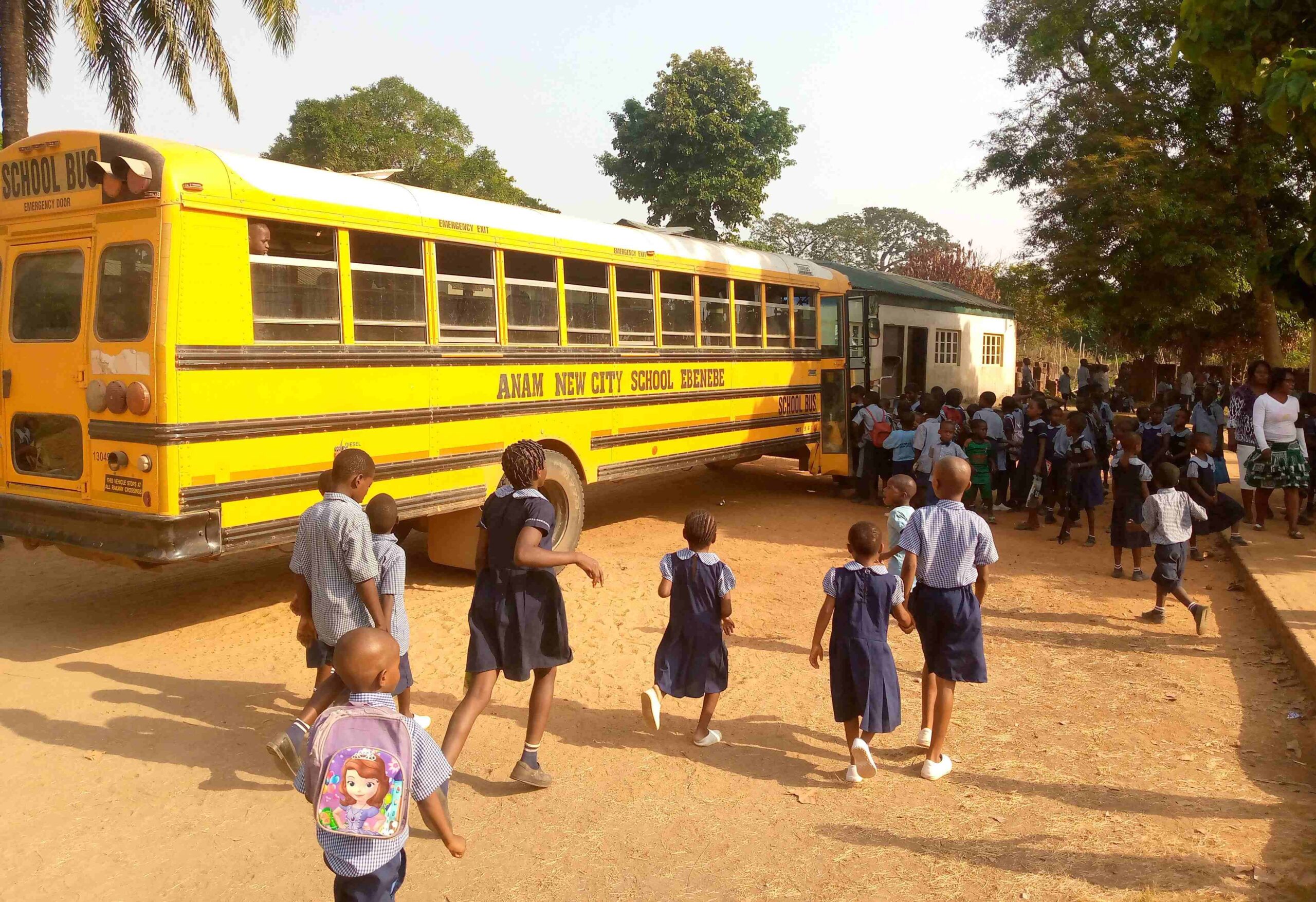By Kehinde Ogunyale
ANAM, ANAMBRA: Anam community sits west of Anambra State in Nigeria’s southeast region. The large community has eight villages. Four (Ebenebe, Mmiata, Iyiora and Abiegbu) are very remote and lie by the Anambra River, which flows some 210 kilometres into Africa’s third largest river – River Niger.
During rainy seasons – between May and October – the river water rises beyond limits and flows into houses.
There are few primary and secondary schools (public and private) in these villages, and they are heavily affected by flooding yearly, causing their structures and furniture to wear out.
The lingering flooding, poor road networks, and lack of access to electricity and other amenities mean most teachers teaching in the schools in these remote villages live on the outskirts where they can access basic amenities.
They travel to the flooded villages to work by taxiing motorbikes daily. When the flooding makes the road inaccessible, “[the] teachers do not come to class,” said Grace Obaka, a farmer and mother of four.
“When the children come home, they tell me that nothing was done in school that day. It can be like that for weeks.”
Most people in these villages are farmers. So parents take their children to work on the farms when schooling activities are interrupted.
New city school
By the time the Nigeria civil war ended in 1970, most schools in the southeast region had been destroyed. Children who survived the 30-month war were learning under tree shades.
Aloy Chife, an Anam indigene, was one of such children. Despite post-war difficulties, Chife succeeded in his studies and went on to get a doctoral degree in economics at the London School of Economics at age 26. He is now a technology venture capitalist.
Chife had always known the condition of education in Anam, his community. So shortly after he married Gesare, a Kenyan nurse, in 2006, the couple decided to start the Aloy and Gesare Chife Foundation for educational intervention in the community.
They started by giving scholarships to underprivileged Anam youths studying in Nigerian universities.
Potential beneficiaries must agree to the condition of providing community-development services of their choice to Anam after graduation. It could be training younger people from Anam in skills development or giving educational support.
For 15 years, the foundation gave 60 scholarships to Anam youths.
But in 2012, it decided to intervene at the foundational education stage, nursery ( one to three) and primary (one to six). It founded the Anam New City School, which gives tuition-free education to children in the community.
Built in Ebenebe village, the five-block school of eight classrooms admits kids from the four remote villages. With a headmistress and three teachers, the school started with 13 children admitted into the nursery section.
“We handpicked these [13] kids. [Then] we increased to 22 in the second term. By the following year, we added 32 pupils to the classes,” Onyinye Ndu, the headmistress, said.
The school employs trained university graduates with at least three years of experience in teaching. After employment, a teacher undergoes one week of training on how to use the school’s curriculum.
To avoid the problems other schools faced with their teachers, the foundation built staff quarters where its teachers and other staff live. That way, they do not need to go through flood-ruined roads to be in school during rainy seasons.
Plus, the school provides the teachers with electricity by running a power generator at intervals daily and has a borehole that gives them clean water. It also has a library holding about 1000 books donated by foreign institutions, something underfunded primary schools in the community cannot afford.
Two types of potential students
Applications for admission open at the beginning of every new session in September, and “we get about 200 pupils willing to join our school every academic session,” Ndu said.
The selection process involves gathering potential students on the school’s field and dividing them into two groups. The first group comprises those who withdrew from other primary schools. Each child in this group takes an entrance examination into Anam New City School’s primary section.
The second group comprises children who have yet to start school even though they are of school age. They are evenly selected from the four villages with their ages and economic backgrounds used as selection criteria for the nursery classes.
“I begin to pick any age [from] six [upward]. It is a lot of technical work, and we also try to take those who are poor because this is a free foundation,” Ndu explained.
The school started by admitting only 25 children into each primary class yearly; now, it accepts 50. And “right now, we have 318 pupils in the school (nursery and primary,” Ndu said.
After admission, each child receives a free uniform, sportswear, and other materials. A free 100-seater school bus picks up students at 7 am at designated locations to school each school day. And each child gets a free lunch during break time.
Sustained with farm produce
Initially, most of the funding came from the founding couple. “We prefer[red] to take some percentage of our earnings and use that for this charity….,” Gesare said.
Later, parents were made to pay a commitment fee of N1000 every term (of three months). But sensing that that commitment was too small to sustain the school in the long run, the foundation decided to use some of its vast land for agriculture. The school is built on one-half of a 22-hectare land owned by the couple.
On the other half, “We plant rice, plantain, yams and cassava… while we also run poultry, goat stables and fish ponds,” Chike Amike, the estate manager, told Prime Progress.
After harvest, each year, the yield is divided into two. One half goes to the school for its free feeding programme; the other half is sold, and proceeds are used to support school administration.
However, it has recorded a poor harvest due to flooding in the last few years.
“We planted over 1000 seedlings of yam last year, but only 441 tubers were gotten, and that was handed over to the school for their feeding programs,” Amike said.
Low yield means the foundation spends more money to feed the kids. And like in other schools, Anam school activities are suspended when the flood sweeps into classes, destroying books, furniture and other items. Ndu said sometimes it takes several weeks before students return to school.
Despite the challenges, and though the founding couple lives outside the country and visits Anam a few times a year, the system they set up at the foundation keeps the school running effectively.
In 2019, Wisdom Ugochukwu, a commercial bus driver, withdrew her daughter, Favour, from one of the village primary schools whose teachers did not show up because of flooding and other factors.
“The proprietor was just extorting the parents and had nothing to show for it,” he said, justifying his reason for pulling her daughter out. He subsequently enrolled her at Anam New City School, where the teachers are more committed and consistent.
Three years later, “I am [satisfied] with her [Favour] because I am seeing all the changes in her,” he said. “Favour can read, spell, and has good writing.”
What makes the foundation’s approach unique is its incorporated farming system that supports the school to run self-sustainably, except for the few times flooding affected yields.
This story was produced with the support of Nigeria Health Watch through the Solutions Journalism Network, a nonprofit organisation dedicated to rigorous and compelling reporting about responses to social problems.
Anam, a community in Anambra State, Nigeria, faces severe flooding issues during the rainy season, affecting schools, road networks, and basic amenities. The persistent flooding forces teachers to live in accessible outskirts and travel by motorbikes, often resulting in missed classes as roads become impassable.
In response to the post-civil war education crisis, Anam native Aloy Chife, along with his wife Gesare, established the Aloy and Gesare Chife Foundation to support education in the community. Initially, the foundation offered scholarships to university students, requiring them to provide community services post-graduation. In 2012, they founded the Anam New City School to provide free nursery and primary education.
The school, located in Ebenebe village, employs trained teachers and offers housing to avoid issues faced by other schools during floods. It provides essential services like electricity, clean water, and a library with 1,000 donated books. Admission is selective and free, with a focus on children from underprivileged backgrounds.
To sustain the school financially, the foundation used its agricultural land to grow crops and rear livestock, with proceeds supporting the school's operations. However, recent poor harvests due to flooding have strained resources, increasing reliance on external funding.
Despite challenges, the school remains operational and has positively impacted students' lives, providing consistent education and better resources compared to other local schools.
This initiative by the foundation demonstrates a unique and sustainable approach to addressing educational challenges in flood-prone regions.
This story was produced with the support of Nigeria Health Watch through the Solutions Journalism Network.






